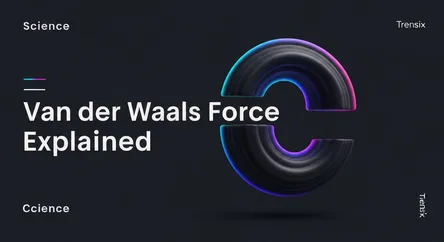Science
Van der Waals Force Explained

Discover the weak, invisible forces that attract molecules, enabling everything from geckos climbing walls to the structure of modern materials.
What is it?
The van der Waals force is a weak, short-range electrostatic attraction between uncharged atoms and molecules. Unlike strong ionic or covalent bonds that involve electron sharing or transfer, these forces arise from temporary fluctuations in the electron clouds around atoms. This creates transient, shifting dipoles that attract neighboring molecules. Though individually faint, the cumulative effect of these interactions is significant. They are a fundamental type of intermolecular force, crucial for explaining why substances condense into liquids and solids and influencing their physical properties like boiling point.
Why is it trending?
While a classic concept in chemistry, van der Waals forces are central to cutting-edge science and technology. In nanotechnology, these forces are critical for the self-assembly of nanomaterials and manipulating objects on a molecular scale. In materials science, understanding these interactions is key to developing new polymers, adhesives, and 2D materials like graphene. Furthermore, their role in structural biology is a major area of research, as they help determine the complex folding and function of proteins and DNA.
How does it affect people?
Van der Waals forces have a surprisingly large impact on the world around us. They are famously responsible for a gecko's ability to climb smooth surfaces; millions of tiny hairs on their feet create a massive cumulative attraction with the wall. These forces hold the layers of graphite together in a pencil, allowing them to slide off onto paper. In biology, they are essential for stabilizing the three-dimensional structures of proteins. They also play a role in the properties of many everyday products, from the adhesion of paints to the stability of polymers in plastics.